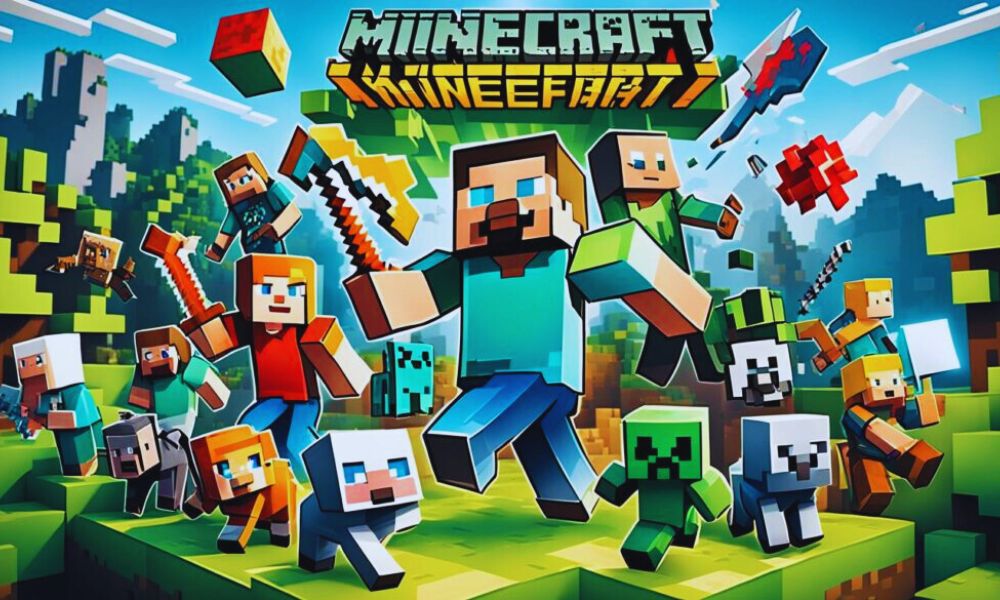Introduction
The release of “Halo: Combat Evolved” in 2003 not only marked a significant milestone for the gaming industry but also set a new benchmark for the visual and interactive elements within video games. Its introduction of innovative game icons and banners played a pivotal role in shaping the branding and player experience, making it an enduring symbol in the gaming community. This article will explore the intricate details of these designs, examining their impact on the game’s identity and the broader cultural influence they wielded within and beyond the gaming sphere.
Historical Context
Back in 2003, the video game industry was experiencing a transformative period with the advent of more sophisticated graphics technologies and storytelling techniques. Games were transitioning from simple entertainment to complex, immersive worlds. The release of Halo was perfectly timed, capturing the imaginations of players around the world with its rich narrative and polished aesthetics. It was a period marked by rapid technological advancements, which Halo utilized to set a new standard in game design and visual appeal, influencing numerous games that followed.
Design Principles Behind Halo Icons
The iconography of Halo was rooted in the principles of clarity, simplicity, and immediate recognition. These icons were designed to be easily identifiable amid the fast-paced action of the game, aiding players in navigating its complex environments and interactions seamlessly. The use of vibrant colors helped distinguish different factions and items, facilitating a quicker player response and deeper narrative engagement. Moreover, the typography and symbolic imagery used in the game’s banners were crafted to evoke the sci-fi and militaristic themes of the game, further immersing players in its world.
Iconography in Halo
Halo’s iconography is rich with symbolism, each element meticulously crafted to contribute to the game’s storytelling and thematic depth. For instance, the Spartan helmet icon not only represents the player’s character but also embodies the themes of resilience and heroism prevalent throughout the game. This section provides a detailed analysis of these symbols compared to other contemporary games, showcasing how Halo’s design was both unique and influential in setting visual standards for future titles.
Banner Designs
The banners used in Halo go beyond mere decorative elements; they encapsulate the essence of the game’s setting and tone. Each banner is thoughtfully designed to reflect different aspects of the game’s universe, from faction flags to mission briefings, enhancing the overall narrative coherence. This detailed examination highlights how these banners contribute not just to aesthetic appeal but also to the storytelling, enriching the player’s engagement with the game’s lore.
The Role of Icons and Banners in Player Engagement
Icons and banners in Halo do more than serve as functional elements; they play a crucial role in enhancing player engagement and emotional investment. By integrating these visual cues seamlessly into gameplay, Halo ensures that players feel a continuous connection to the game’s world. The strategic placement and design of these elements foster a sense of familiarity and competence, which are vital in maintaining player interest and satisfaction.
Technical Aspects of Creating Game Icons
This section delves into the technical nuances of creating game icons in the early 2000s, highlighting the limitations and challenges faced by designers at that time. Despite the constraints of the technology available, the design team at Bungie managed to create visually striking and functionally effective icons using a blend of artistic creativity and technical prowess. The software tools and methods employed are explored in detail, providing insights into the innovative approaches that contributed to the game’s iconic status.
Influence on Future Game Designs
Halo’s influence on the video game industry extends far beyond its immediate commercial success. It helped redefine what players expect from game visuals and user interfaces. This segment examines how subsequent video games have drawn inspiration from Halo’s design elements, adopting its principles of clarity, thematic coherence, and emotional engagement in their own visual strategies.
Fan Reception and Community Impact
The aesthetic and functional aspects of Halo’s design resonated deeply with its audience, sparking a wave of fan art, cosplay, and community-driven projects. This part of the article explores the vibrant community that has formed around Halo, driven in part by its compelling design and how it has inspired fans to engage creatively with the game’s elements, further cementing its legacy.
Marketing and Commercial Success
The distinctive icons and banners of Halo were not just artistic successes; they were also integral to the game’s marketing strategy. This analysis discusses how these visual elements were leveraged in promotional campaigns, significantly enhancing the game’s market presence and helping it achieve iconic status.
Comparative Analysis
By comparing Halo’s visual design with other landmark games of the early 2000s, this section highlights what set Halo apart and how these elements contributed to its standout status in a crowded marketplace. The unique blend of functionality, aesthetic appeal, and narrative enhancement in Halo’s design helped it to not just compete but dominate during its release period.
Evolution of Design in Later Halo Series
As the Halo series progressed, its design elements evolved to adapt to new technologies and changing player expectations. This part examines the alterations in icon and banner designs throughout the series, discussing how these changes were received by the community and what they signify about the evolving nature of game design.
Expert Opinions and Interviews
Incorporating insights from game designers and industry experts, this section provides a behind-the-scenes look at the challenges and triumphs of Halo’s design process. These perspectives shed light on the creative decisions that shaped the game’s enduring visual identity.
Conclusion
Halo game icons banners have made a profound impact on the video game industry, offering a compelling study in how visual design can enhance player experience and contribute to a game’s success. Their legacy continues to influence new generations of game designers, underscoring the importance of cohesive, engaging visual design in video games.
FAQs
- What design principles were pivotal in the creation of Halo’s game icons?
- The creation of Halo’s game icons was guided by several key design principles, including clarity and simplicity, which ensured that icons were immediately recognizable and functional within the game’s fast-paced context. Consistency in style and color helped maintain a cohesive visual language across the game, enhancing the user experience and reinforcing the Halo brand. Each icon was also crafted to be symbolically rich, adding depth to the game’s narrative and thematic elements.
- How has player feedback shaped the evolution of icon design in subsequent Halo games?
- Player feedback has been instrumental in refining the design of icons in subsequent Halo games. This feedback has led to adjustments in icon sizes, colors, and contrast to enhance visibility and recognition. It has also influenced the customization options available in the user interface, allowing players to tailor the gameplay experience to their preferences. Moreover, designers have used feedback to better integrate icons into the storytelling process, using them to subtly convey parts of the game’s plot and lore.
- In what ways did Halo’s icons and banners enhance the gaming experience compared to other games released at the same time?
- Halo’s icons and banners set a new standard in game design by integrating visual elements that were not only functional but also aesthetically pleasing and immersive. Unlike many contemporaneous games, which often used more utilitarian or obtrusive designs, Halo’s icons were seamlessly woven into the game environment, enhancing rather than detracting from the immersive experience. The intuitive nature of these icons also helped to reduce the learning curve for players, broadening the game’s appeal and accessibility.
- Can the design influence of Halo’s icons and banners be seen in modern video games?
- Yes, the design influence of Halo’s icons and banners is evident in many modern video games across various genres. Contemporary game designers have adopted Halo’s principles of clarity, thematic coherence, and emotional engagement in their visual strategies. Modern games often feature icons that are not only visually appealing but also integrated into the game environment in ways that enhance the player’s immersion and interaction, a trend pioneered by Halo.
- What were the main challenges faced by designers when creating game banners with the technology available in 2003?
- Designers faced several challenges when creating game banners with the technology available in 2003. The limitations of early 2000s graphics technology, such as lower resolutions and restricted color palettes, made it difficult to create detailed and visually compelling icons. Additionally, memory and processing constraints required designers to optimize the size and complexity of graphical elements to ensure smooth gameplay. Balancing aesthetic appeal with technical feasibility was a significant challenge that the design team managed to navigate successfully, setting a benchmark for future games.

